The December 1907 brought along change. The Bureau of Mines and Health and Safety regulations were now on the books. However, Farmington would be a defining moment in America’s Health and Safety Laws in the coal mining industry.
United States Bureau of Mines
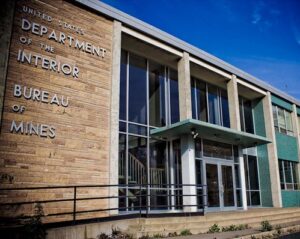
In 1910, the United States Congress created the United States Bureau of Mines. Its main function was to investigate and inspect mines to reduce the likelihood of future explosions and loss of life. It also had the goal of limiting the waste of human and natural resources.
The Bureau of Mines would also set up field offices to train crews, investigate disasters, and provide rescue services. However, the Bureau was given very little power to enforce mine regulations and safety. This would change in later years. But Monongah was the first disaster to start the chain to lead to safety and health regulations for the miners.
However, by 1968, the Bureau had basically been reduced to research on the conservation of mineral resources. To give analysis on the impact of the proposed mineral laws, and the production, sale, and distribution of those minerals. The laws would change again after the Farmington Mine Disaster.
The History of the Consol Number Nine Mine
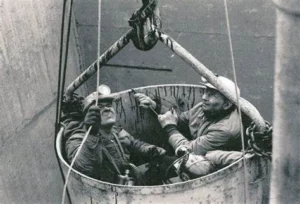
The Pittsburgh coal seam at the Consol Number nine mine was 300 feet below the valley bottom of the area. The seam itself was ten feet thick. This mine was located two miles north of Farmington and Mannington, West Virginia.
In 1909, the seam had been opened before to mining but locked safety lamps had to be used because the mine was known to be “gassy”. The mine was called the Jamison number nine mine. At one time compressed air power was used to undercut the coal seam and horse power was used to haul the coal out of the mine. Within a year, the horses would be replaced with compressed air locomotives.
Jamison mine closed in 1930 and remained closed for three years when the coal production fell. It reopened in 1934. On November 14, 1954, sixteen miners were killed in an explosion leading to a temporary shutdown. The explosion had also destroyed the head-frame to one of the mining shafts and had occurred during a pillar removal.
The Fatal Explosion
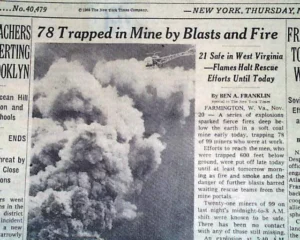
On November 20, 1968, ninety-nine men were working at the Consolidation Coal Mine number nine mine shaft at Farmington. At 5:30 a.m., it was rocked by an explosive blast. From twelve miles away, the blast was felt in Fairmont. Miners living in the area heard the noise and headed to the mine because they knew what the sound meant.
Smoke and flames were reaching 150 feet into the air and spreading rapidly. Twenty-one miners were able to escape from the mine over the next few hours.
Rescue and Recovery Effort

The fires could not be stopped for over a week. Air holes drilled into the mines showed that the air was not breathable and could not sustain life. The decision was then made to use concrete to seal the mine on November the 30th, to attempt to starve the fire of oxygen.
It took ten years for the recovery of the bodies from the mine. This effort started in September of 1969 and ended by April 1978. Seventy-eight men died, of which, nineteen were never recovered.
Cause of the Explosion
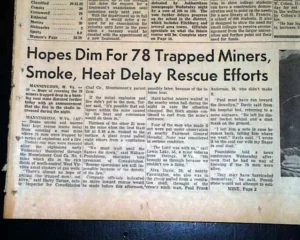
Initially the cause of the Farmington explosion not determined. Because of the intense fire and the time needed to let it burn itself out, it was felt that it was impossible to find out what exactly happened at the mine.
However an examination of the Farmington explosion in 1990 did determine that the ventilation of the mine was not up to standards and was most likely inadequate for quite some time before the explosion. This had allowed for the build up of firedamp gases and coal dust in the mine to reach flammable levels.
There was also a very disturbing finding in 2008 that the ventilation fan had been tampered with. The safety alarm on the fan had been disabled so that there would be no way to determine if it was working correctly as the alarm had been bypassed.
Health and Safety Regulations
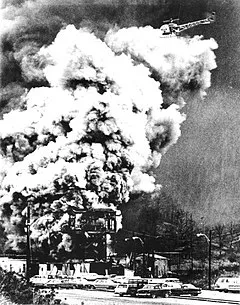
The U.S. Department of the Interior held a conference to determine changes to the U.S. mining safety laws. These laws would increase Federal mine inspections and strengthen safety standards. These laws would also give coal miners more safety and health rights. Just eight years later, these laws would be updated because of the Scotia mine disaster of March 9, 1976.
Lawsuit

None of the families of the victims of the blast were ever compensated. The wrongful death case was filed on November 6, 2014, in the Marion County Circuit Court on behalf of the families.
The damages asked for in the case was $110,000 in compensation per miner, plus interest and punitive damages. The money asked for was the maximum amount that was asked for in wrongful death cases in 1968.
This was filed on the basis that allegedly the mine’s chief electrician, had disabled the alarm on the ventilation fan. The suit also alleged that Consolidation Coal Mining Company had concealed the name of the manager since the accident until 2014.
The case was transferred to federal court because of the diversity of the plaintiffs involved and because the statue of limitations in the state of West Virginia had expired and thus the wrongful death case was dismissed on those grounds.
In 2017, the case went to the Supreme Court of Appeals of West Virginia from the United States Court of Appeals for the Fourth Circuit claiming a lack of precedent. The final ruling of the case was the that the two year statue of limitations in the wrongful death action had since expired and the case was then dismissed.
In Memory
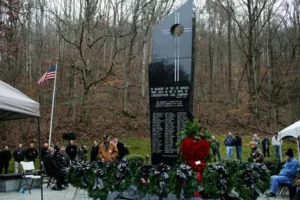
We would like to take a moment and remember all of those who lost their lives. When it comes to mine disasters and strikes, they are historical events but we would also like to remember that there were real people involved in these events. May their families find peace and those that lost their lives rest in peace as their memories are always a blessing to us all.
The List of the Deadly Coal Mine Disasters
Naomi Mine Explosion at Fayette City, Pennsylvania, December 1st
Monongah 6 and 8 at Monongah, West Virginia, December 6th
Yolande Mine Explosion at Yolande, Alabama, December 16th
Darr Mine Explosion at Jacob’s Creek, Pennsylvania, December 19th
Bernal Mine Explosion at Carthage, New Mexico, December 31st
Thank You
Thank you for watching our video and reading our post Farmington Mine Disaster November 20, 1968. We thank you for continuing to support Kentucky Tennessee Living. As we bring to you the history of the Appalachian Mountains.
Sources
United States Bureau of Mines
https://en.wikipedia.org/wiki/United_States_Bureau_of_Mines
The New York Times November 1968. Author of the story Ben A. Franklin
Scotia 1976, The Twin Mining Disasters of Letcher Co Ky
http://kytnliving.com/scotia-1976-the-twin-mine-disaster/
Impact still felt 53 years after Farmington No. 9 mine explosion
https://umwa.org/news-media/news/farmington-mine-explosion
Farmington No. 9: The West Virginia Disaster that Changed Coal Mining Forever
https://www.wvpublic.org/news/2018-11-20/farmington-no-9-the-west-virginia-disaster-that-changed-coal-mining-forever
Farmington Mine Disaster
Consol No. 9 Mine Explosion
Mountaineer Coal Company
Division of Consolidation Coal Company
https://usminedisasters.miningquiz.com/saxsewell/farmington.htm
Charleston Gazette-Mail
Lawsuit alleges cover-up after 1968 Farmington No. 9 Mine Disaster
November 6, 2014 and updated October 27, 2017
https://www.wvgazettemail.com/news/lawsuit-alleges-cover-up-after-1968-farmington-no-9-mine-disaster/article_7c414ce5-d80a-5908-b23a-b39908d3dbf3.html
Copyright and Other Information
Copyright 2022 Kentucky Tennessee Living
Social Media
For more about us, you can visit our Facebook page:
https://www.facebook.com/kytnliving
Our Twitter page:
https://www.twitter.com/KYTNLiving
Our YouTube Channel:
https://www.youtube.com/kytnliving
When we forget our past and who we are as a people, then we become who “they” say we are. ~~ David Sergent
I have attended the University of Kentucky. I have an Associates Degree from Hazard Community College and Technical School. I have also attended the University of Pikeville. I have taken several classes in Journalism as well as in the Appalachian History, Literature, and Sociology during my time at those schools.
I was born in Florida and grew up in Burdine, Kentucky. I have been married to David W. Sergent since May 4, 2013. I have two children and four grandchildren from a previous marriage. I currently live in Tennessee but my hope is to one day come back home to live in the beautiful mountains once more.


